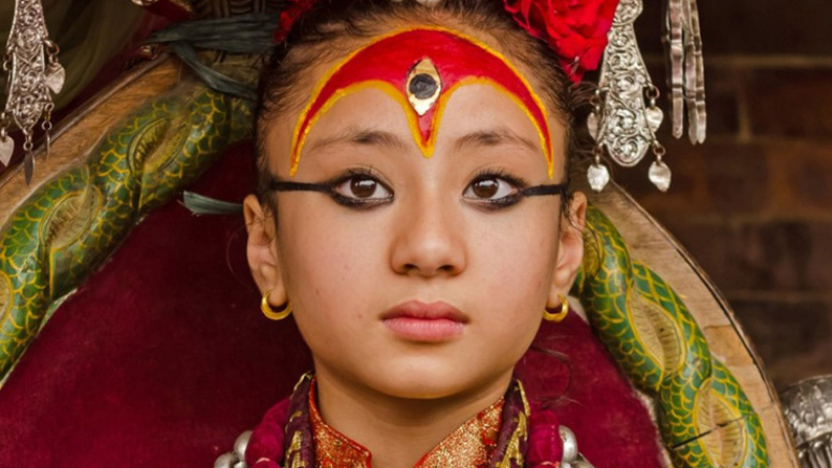In Nepal, the Kumari is no ordinary child. She is believed to be the living embodiment of Goddess Taleju Bhawani or Durga. The practice is rooted in the idea that divinity can manifest in purest form through a young girl, untouched by worldly impurity. This is why the Kumari is worshipped with such respect and awe.
The ritual is not just about religion but also about history, power, and culture. Imagine kings, priests, and entire communities bowing before a small child, it reveals how the goddess is seen not in grandeur, but in innocence.
How is a Kumari chosen?
The process is surrounded by mystery and devotion. The selection is based on 32 perfections, which are believed to mark her divine form. Among them:
- Chest like a lion – symbolising strength
- Eyelashes like a cow – signifying grace
- Body like a banyan tree – rooted and powerful
- Thighs like a deer – swift and gentle
- Voice like a duck – soft yet clear
Beyond these, she must:
- Be free of scars or blemishes
- Have never menstruated
- Belong to the Shakya clan of the Newar Buddhist community
- Be fearless even in the presence of darkness, sacrifice, and rituals
Only then is she declared the Living Goddess.

The power of Kumari is not ordinary. She is considered to hold Shakti, the very force of creation. People bow to her believing that her presence can heal, protect, and bless. A simple gesture from the Kumari is thought to predict one’s destiny:
- A smile brings fortune
- Tears signal sorrow
- Trembling foretells imprisonment
- Refusal to look at someone suggests grave misfortune
Festivals and worship
- During Indra Jatra and Dashain, the Kumari is believed to radiate her greatest strength. She is paraded through Kathmandu in a golden palanquin, while thousands gather for a glimpse.
- On Navami, the ninth day of Dashain, her power is said to equal Durga herself, fierce, protective, and victorious over evil.
- Weapons, animals, and symbols are offered to her, not as mere ritual, but as surrendering human weakness to divine strength.
Life as Kumari is both sacred and confined. She does not walk on the ground, for the earth is another god, and her purity must remain untainted. She is carried wherever she goes. She does not bleed, for blood is believed to break the divine power within her. Yet within her palace, the Kumari Ghar in Durbar Square, she is still a child, studying, playing, and living quietly until her time as goddess ends with her first drop of blood.
What happens after?
- The goddess departs, and the girl returns to being human.
- Old myths once claimed ex-Kumaris could not marry, but today many leads normal lives, pursuing education and careers.
- Still, they are always remembered with reverence, for once they carried the goddess within them.
At its heart, the Kumari tradition is more than ritual. It is a reminder that divinity can reside in the smallest, purest of forms: a little girl whose innocence becomes a vessel of the goddess. It draws pilgrims, historians, and curious souls alike, all waiting in the courtyard of Kumari Ghar for a fleeting glance through the golden window.
And in that moment, devotion meets curiosity. People see not just a child, but a living goddess, carrying centuries of belief, mystery, and sacred power.
Source / Image Credit : Himalayan Dreams, The Times of India
